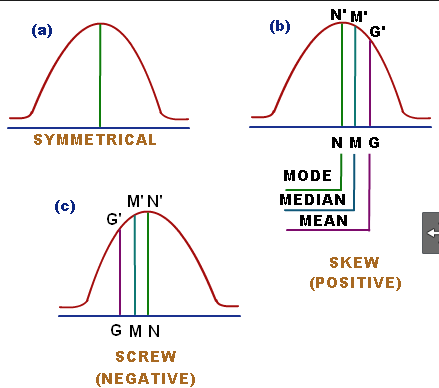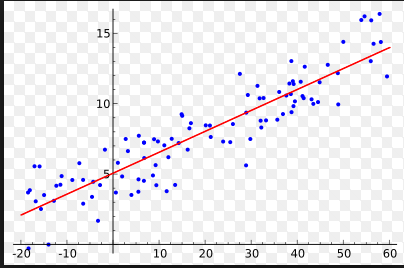(i) `-1 le r (x,y) le 1`
(ii) If `r = 1`, then the coefficient of correlation is perfectly positive.
(iii) If `r =- 1`, the correlation is perfectly negative.
(iv) The correlation coefficient is a pure number independent of the unit of measurement.
(v) The coefficient of correlation is independent of the change in origin and scale.
(vi) If `-1 < r < 1`, it indicates the degree of linear relationship between `x` and `y`, where as its sign tells about the direction of relationship.
(vii) If `x` and `y` are two independent variables, `r = 0`.
(viii) If `r = 0, x` and `y` are said to be uncorrelated. It does not imply that the two variates are independent. `r (x, y)=0`
(ix) If `x` and `y` are random variables and `a, b, c` and `d` are any numbers such that `a =ne 0, c ne 0`, then
`r(ax+b, cy +d)=(|ac|)/(ac) r (x,y)`
(i) `-1 le r (x,y) le 1`
(ii) If `r = 1`, then the coefficient of correlation is perfectly positive.
(iii) If `r =- 1`, the correlation is perfectly negative.
(iv) The correlation coefficient is a pure number independent of the unit of measurement.
(v) The coefficient of correlation is independent of the change in origin and scale.
(vi) If `-1 < r < 1`, it indicates the degree of linear relationship between `x` and `y`, where as its sign tells about the direction of relationship.
(vii) If `x` and `y` are two independent variables, `r = 0`.
(viii) If `r = 0, x` and `y` are said to be uncorrelated. It does not imply that the two variates are independent. `r (x, y)=0`
(ix) If `x` and `y` are random variables and `a, b, c` and `d` are any numbers such that `a =ne 0, c ne 0`, then
`r(ax+b, cy +d)=(|ac|)/(ac) r (x,y)`

